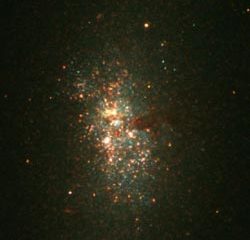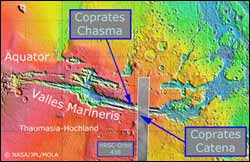This area deals with the fundamental laws and building blocks of nature and how they interact, the properties and the behavior of matter, and research into space and time and their structures.
innovations-report provides in-depth reports and articles on subjects such as astrophysics, laser technologies, nuclear, quantum, particle and solid-state physics, nanotechnologies, planetary research and findings (Mars, Venus) and developments related to the Hubble Telescope.

Most solids expand when heated, a familiar phenomenon with many practical implications. Among the rare exceptions to this rule, the compound zirconium tungstate stands out by virtue of the enormous temperature range over which it exhibits so-called “negative thermal expansion,” contracting as it heats up and expanding as it cools, and because it does so uniformly in all directions.
While engineers are already pursuing practical applications in areas ranging from electronics to

The Pleiades are one of the most famous and brightest stellar clusters in our Galaxy. One might imagine that the distance to such an important object would be well-known and no longer poses a problem for astrophysicists. For several years, however, determining the distance to the Pleiades has been a crucial and complicated problem.
For several decades, the distance to the Pleiades was determined by methods relying on our knowledge of stellar physics that was assumed to be rather

Star formation is one of the most basic phenomena in the Universe. Inside stars, primordial material from the Big Bang is processed into heavier elements that we observe today. In the extended atmospheres of certain types of stars, these elements combine into more complex systems like molecules and dust grains, the building blocks for new planets, stars and galaxies and, ultimately, for life. Violent star-forming processes let otherwise dull galaxies shine in the darkness of deep space and make

“Swift,” a new NASA satellite, will head for the heavens Nov. 17, designed to detect gamma-ray bursts and whip around to catch them in the act. And the trigger software that makes the flying observatory smart enough to do this comes from the Space Science team at the Los Alamos National Laboratory.
Gamma-ray bursts, first discovered by Los Alamos in the course of nuclear nonproliferation data analysis, occur randomly throughout the universe. They are the most powerful explos

These images, taken by the High Resolution Stereo Camera (HRSC) on board ESA’s Mars Express spacecraft, show the detailed structure of Coprates Catena, a southern part of the Valles Marineris canyon system on Mars.
The images were taken during orbit 438 with a ground resolution of approximately 43 metres per pixel. The displayed region covers an area centred at about latitude 14° South and longitude 301° East.
Coprates Catena is a chain of collapsed structures, which run

ESA’s SMART-1 is successfully making its first orbit of the Moon, a significant milestone for the first of Europe’s Small Missions for Advanced Research in Technology (SMART) spacecraft.
A complex package of tests on new technologies was successfully performed during the cruise to the Moon, while the spacecraft was getting ready for the scientific investigations which will come next. These technologies pave the way for future planetary missions. SMART-1 reached its closest